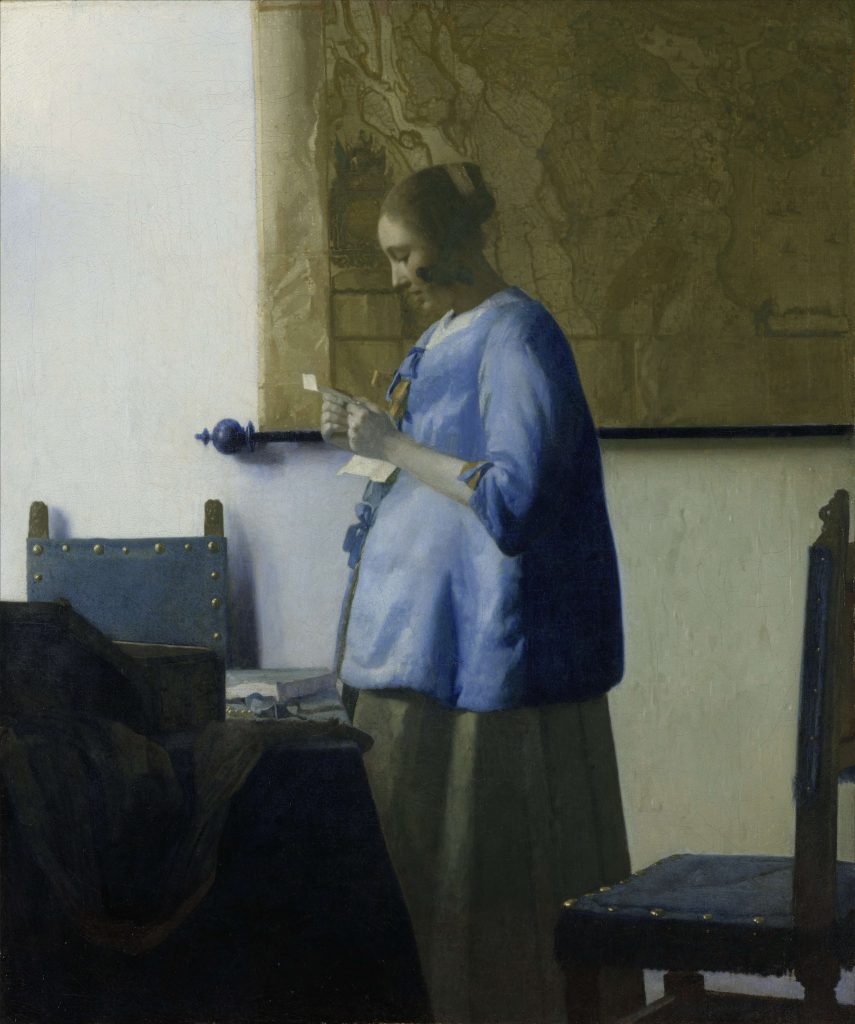Art World
A Collective Made NFTs of Masterpieces Without Telling the Museums That Owned the Originals. Was It a Digital Art Heist or Fair Game?
The NFT outfit Global Art Museum now says it is an art collective conducting a "social experiment."

The NFT outfit Global Art Museum now says it is an art collective conducting a "social experiment."

Sarah Cascone

Has the soaring market for NFT art gone too far? That was the fear when an outfit calling itself Global Art Museum unveiled a collection of NFTs based on paintings from famous institutions, including the Rijksmuseum in Amsterdam, on the NFT marketplace OpenSea earlier this month.
“We are disrupting the art museum industry by transforming old paintings and artwork into NFTs,” wrote Global Art Museum on Twitter. “The NFT space is new and nebulous, but we aim to bring the museums into this space. The days of boring, staid, and stuffy museums are over.”
NFTs, or non-fungible tokens, are unique digital assets stored on the blockchain. Digital artist Beeple set the auction record for the medium last week at $69 million.
By minting versions of historic works of art on the blockchain, Global Art Museum was ostensibly creating a new way to own masterpieces housed in some of the world’s most famous institutions.
On OpenSea, the company listed digital files of artworks from the Rijksmuseum, the Art Institute of Chicago, the UK’s Birmingham Museums, and the Cleveland Museum of Art. The gems of each museum’s collection appeared: Woman in Blue Reading a Letter by Johannes Vermeer, A Sunday Afternoon on the Island of La Grande Jatte by Georges Seurat, George Washington at the Battle of Princeton by Charles.
The backlash was immediate.
“I’m enraged,” Tina Rivers Ryan, curator of Modern and contemporary art at the Albright-Knox Art Gallery in Buffalo, wrote on Twitter. The online magazine Museum Next called it an “NFT art heist.”
Global Art Museum’s OpenSea listing claimed that 10 percent of its sales would benefit the museums, as a way of helping them make ends meet during the pandemic. (A recent op-ed on Artnet News discussed NFTs as a possible revenue source, noting that “museums are sitting on large, potentially monetizable digital repositories of photographs, prints, and archival materials.”)
“This is our mission impossible, but we are upbeat about our chances of working with the big names like @museodelprado, @MuseeLouvre, [and] @MuseeOrsay,” Global Art Museum wrote on Twitter. But it soon became clear that it was not listing its NFTs in partnership with the institutions that owned the originals.
The museums declined to comment on Global Art Museum, but clarified that there was no an authorized collaboration.
“We do not have a partnership with any of these parties,” a Rijksmuseum wrote on Twitter. “Our collection is for everyone. We have an open data policy to connect our collection to as many and diverse people as possible.”
“We encourage as many people as possible to view, download, and use out-of-copyright images from the collection,” a spokesperson for the Birmingham Museums Trust told Artnet News in an email. “We have purposefully made these images available for free under a Creative Commons Zero License via our Digital Image Resource… and we will continue to encourage the use of our images by all.”
Now, Global Art Museum is claiming its initial launch was a “social experiment” designed to drum up publicity for its real project: creating animated versions of famous paintings as NFTs.
“We have received many tweets from concerned NFT artists and aficionados, some with anger, many with distaste, and some with ambivalence. We are sorry that we have evoked such passions in people,” Global Art Museum wrote in a statement.
(1/9)
Welcome to GAM.
Our 1st NFT social experiment has ended. A global conversation on NFTs has finally started with a big bang. We are thankful for 1000s of tags & mentions on Twitter. Let us explain what REALLY happened. ?#museum #museums #nft #art pic.twitter.com/VwkZ6gr6OP
— GAM (Global Art Museum) (@GlobalArtMuseum) March 15, 2021
It insists that minting art museum NFTs was not “attempt to leverage on and profiteer from the public domain nature of the paintings,” and notes that none of its listings were for sale or auction. Furthermore, it says that its Twitter posts stating that “we aim to stake a claim on the NFTs before other callous NFT speculators do” were “deliberately made ridiculous.”
Global Art Museum now identifies itself as “an art collective of NFT graphic animators and artists based across the world,” and is advertising a launch of animated canvases based on artworks in the Birmingham, Rijksmuseum, Cleveland Museum, and Art Institute of Chicago collections in April. (In the meantime, its OpenSeas listings have been pulled, replaced with messages saying “you have been PUNKED.”)
“Want to see 16th, 17th, 18th, and 19th century art come to life? All animated canvases are faithful to their namesakes, right down to the smallest detail envisioned by the original artist,” Global Art Museum said. The first two animations it has shared depict Paris Street; Rainy Day by Gustave Caillebotte and A Sunday Afternoon on the Island of La Grande Jatte, both in the Art Institute of Chicago collection.